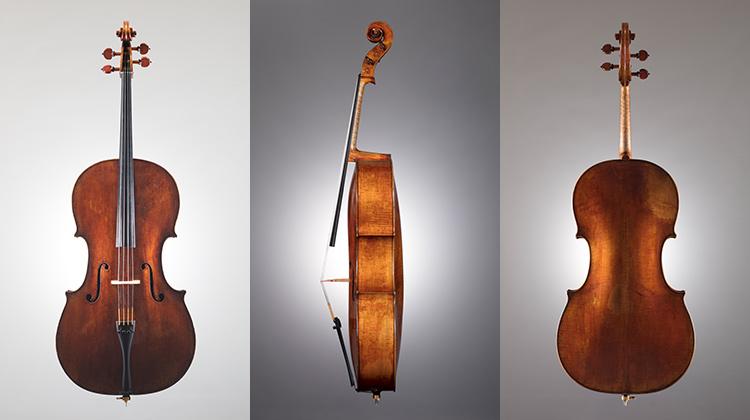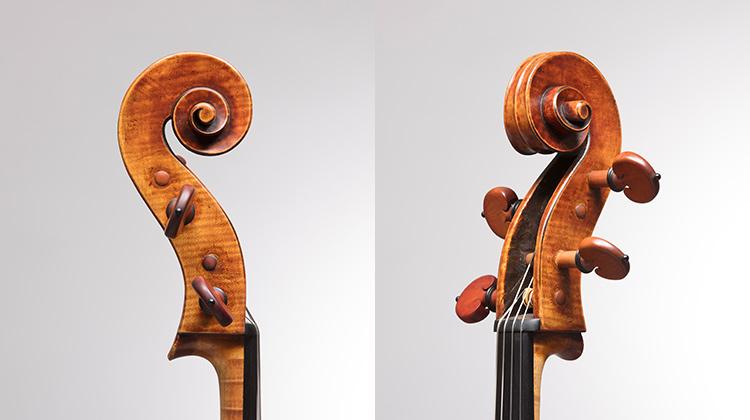It is said that there are about 50 cellos made by Antonio Stradivari which remain today. This cello was brought to London from Italy around 1780 by a well-known violinist Felice de Giardini (1716-1796), who sold it to Lord Aylesford, a well-known amateur player. It was retained by his family for about 100 years, hence the name of this cello. In 1875, it was sold to the violin dealer George Hart of London, who sold it to Baron Heath in 1880. However, it was bought back by George Hart in 1882, and re-sold to Mr. Richard Bennett, who in his later years formed a fine collection of Cremonese masterpieces. At one time he also possessed the “Messie”, the “Alard” and other famous Stradivari instruments. Not being a cellist himself, Mr. Bennett parted with the instrument and left it on sale with W. E. Hill & Sons in 1892. The firm retained possession of it until 1898, when it once again passed into the hands of George Hart, who later sold it to Mr. Keene of Buenos Aires. It was purchased by Maucotel of Paris in 1923 and was sold in Germany through the intermediary of Mr. Hamma of Stuttgart. It later formed part of the famous collection of Mr. Harry Wahl in Vyborg, Finland. After World War II, he sold many of his instruments to Emil Herrmann, dealer of New York, and through him in 1946, it passed into the possession of Gregor Piatigorsky (1903-1976), the world-acclaimed cellist who resided in Philadelphia. Janos Starker (1924-2013) had the use of this cello between 1950-1965 and made 35 recordings with the instrument. In 1966, the cello passed into the hands of Henry Werro, luthier of Berne and had been kept by his family since then. Sasakawa Music Foundation acquired this instrument in June 2003 from the Werro family.
![]()

